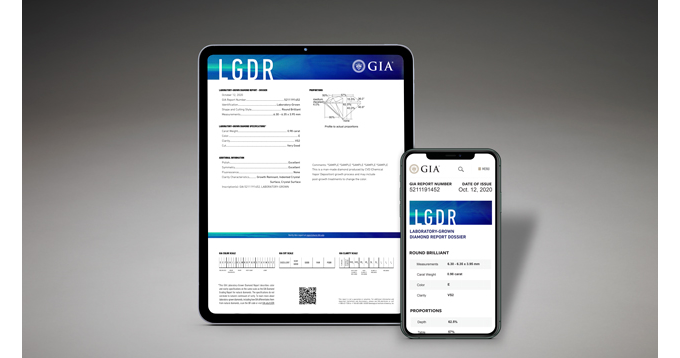
“The evolution of GIA’s reports for laboratory-grown diamonds is fully aligned with our mission to protect all consumers,” said Susan Jacques, GIA president and CEO. “Everyone who purchases gemstone jewelry – whether natural or laboratory-grown – expects and deserves the information, confidence and protection that come with a GIA report.”
The four LGDR by GIA reports feature a distinct new look and updated format fully differentiated from GIA’s well-known grading reports for natural diamonds.
The new service for LGDs will include 4Cs assessment, plotted clarity diagram and proportions diagram for stones from 0.15 cts and 4Cs assessment and proportions diagram for stones from 0.15 cts up to 1.99 cts.
All LGDs will be laser-inscribed with the GIA report number and the words "laboratory-grown" to ensure that consumers can clearly differentiate the product and fully understand their purchases.
Fees for the new reports are the same as for natural diamonds, with the addition of inscription services fees.
Each LGDR report features a QR code linked to a custom landing page on GIA’s website, GIA.edu/LGDR, offering comprehensive information on laboratory-grown diamonds.
The new LGDR reports state that the stone was created by either the chemical vapor deposition (CVD) or high pressure, high temperature (HPHT) method and whether it may include post-growth treatments to change the color.
Alex Shishlo for Rough&Polished
